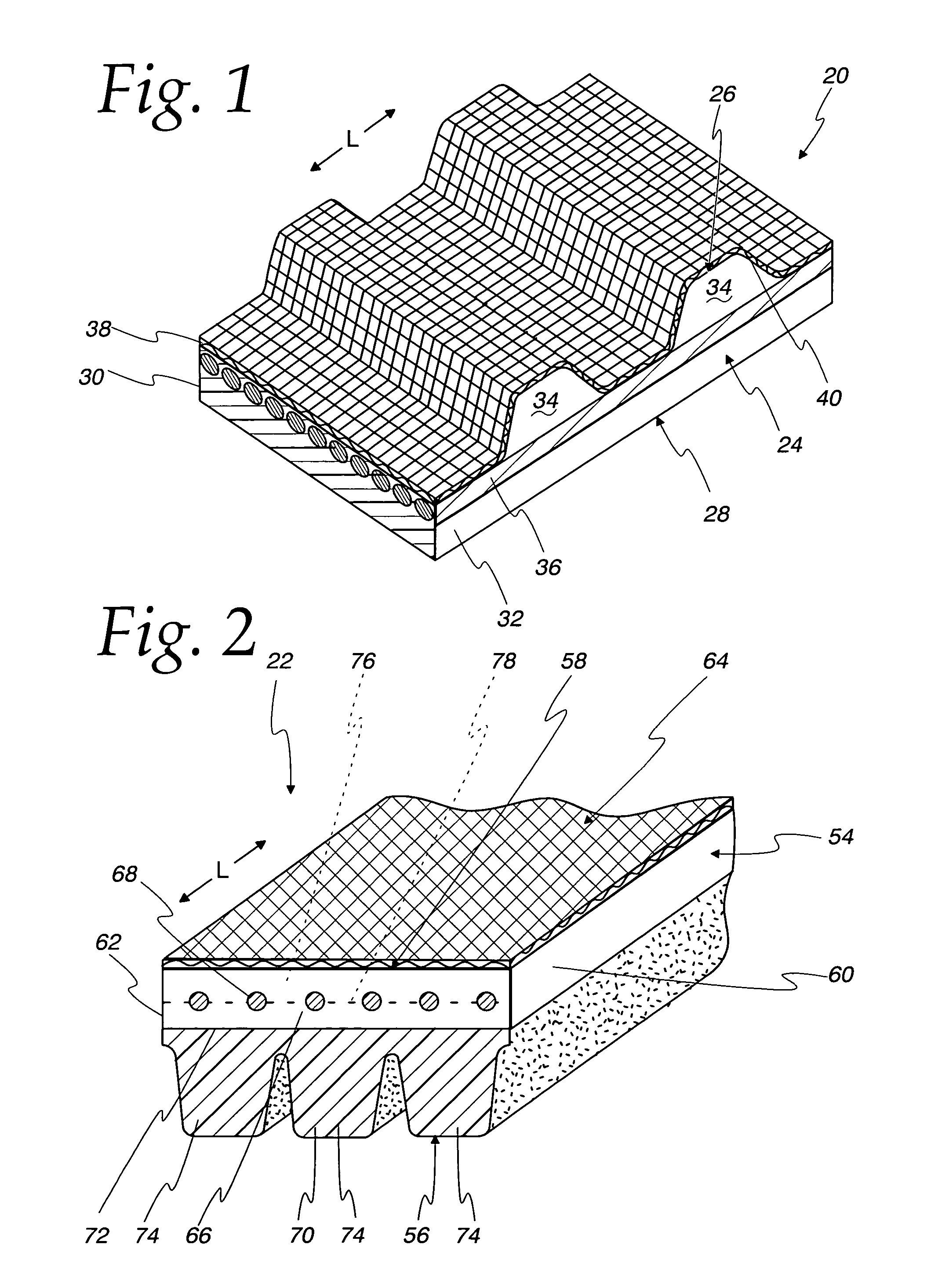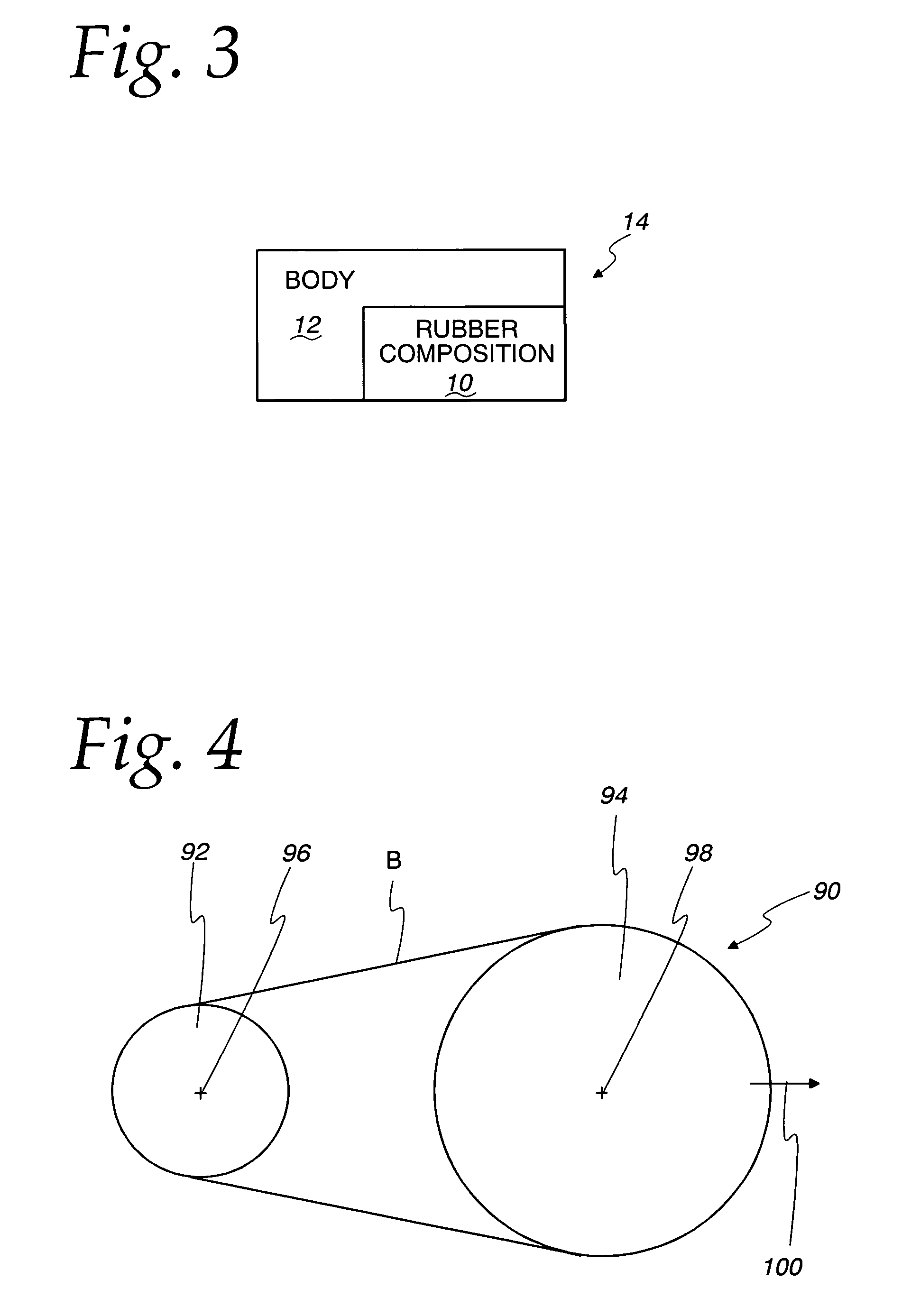Power transmission belt
a transmission belt and power technology, applied in the direction of driving belts, v-belts, mechanical equipment, etc., can solve the problems of premature cracking of conventional belts made of natural rubber, styrene-butadiene rubber, chloroprene rubber, etc., and the ozone atmosphere deterioration is a problem,
- Summary
- Abstract
- Description
- Claims
- Application Information
AI Technical Summary
Benefits of technology
Problems solved by technology
Method used
Image
Examples
Embodiment Construction
, where not less than a desired amount of maleimide was used, the tooth sheer strength was significantly decreased to the extent that it had no practical utility.
[0084]In Comparative Examples 3 and 4, where EPDM, which was an ethylene α-olefin, was used as the sole rubber component, shear strength was poor. By reason of separation of the load carrying cords, it was not possible to run to a finishing stage after 500 hours.
[0085]With the Inventive Examples, tooth shear strength was high, evidencing a good static physical property.
[0086]In the running tests, the Inventive Examples also showed an apparent improvement in durability as compared with the Comparative Examples. It was found that the EVA-compounded systems showed a particularly significant improved effect in the tooth shear strength and in longevity. Further, a mixture of EVA and EPDM in the specific ratio resulted in good tooth shear strength.
[0087]It was also found that, with the EVA, with ethylene controlled within a speci...
PUM
| Property | Measurement | Unit |
|---|---|---|
| temperature | aaaaa | aaaaa |
| width | aaaaa | aaaaa |
| width | aaaaa | aaaaa |
Abstract
Description
Claims
Application Information
 Login to View More
Login to View More - R&D
- Intellectual Property
- Life Sciences
- Materials
- Tech Scout
- Unparalleled Data Quality
- Higher Quality Content
- 60% Fewer Hallucinations
Browse by: Latest US Patents, China's latest patents, Technical Efficacy Thesaurus, Application Domain, Technology Topic, Popular Technical Reports.
© 2025 PatSnap. All rights reserved.Legal|Privacy policy|Modern Slavery Act Transparency Statement|Sitemap|About US| Contact US: help@patsnap.com



